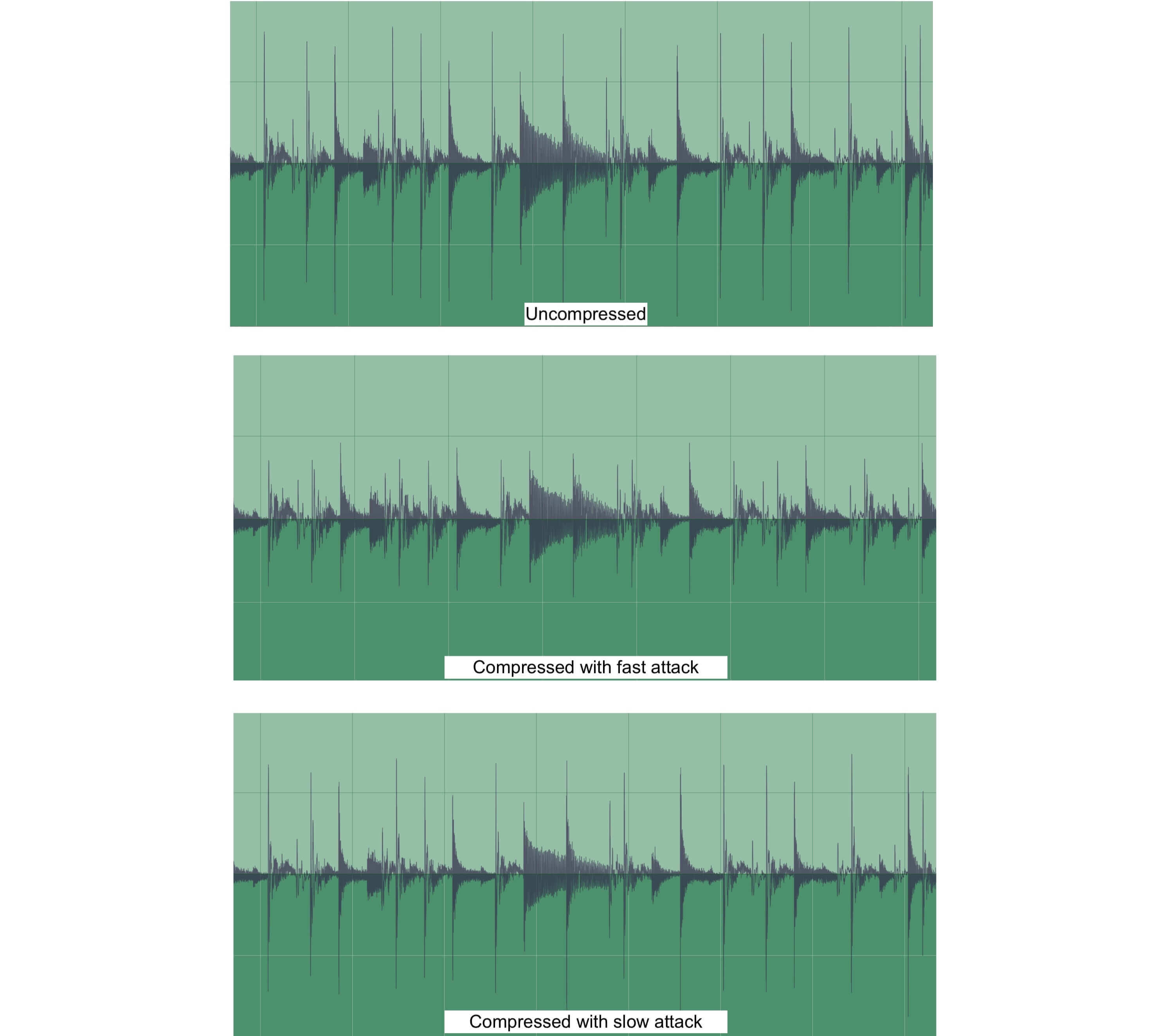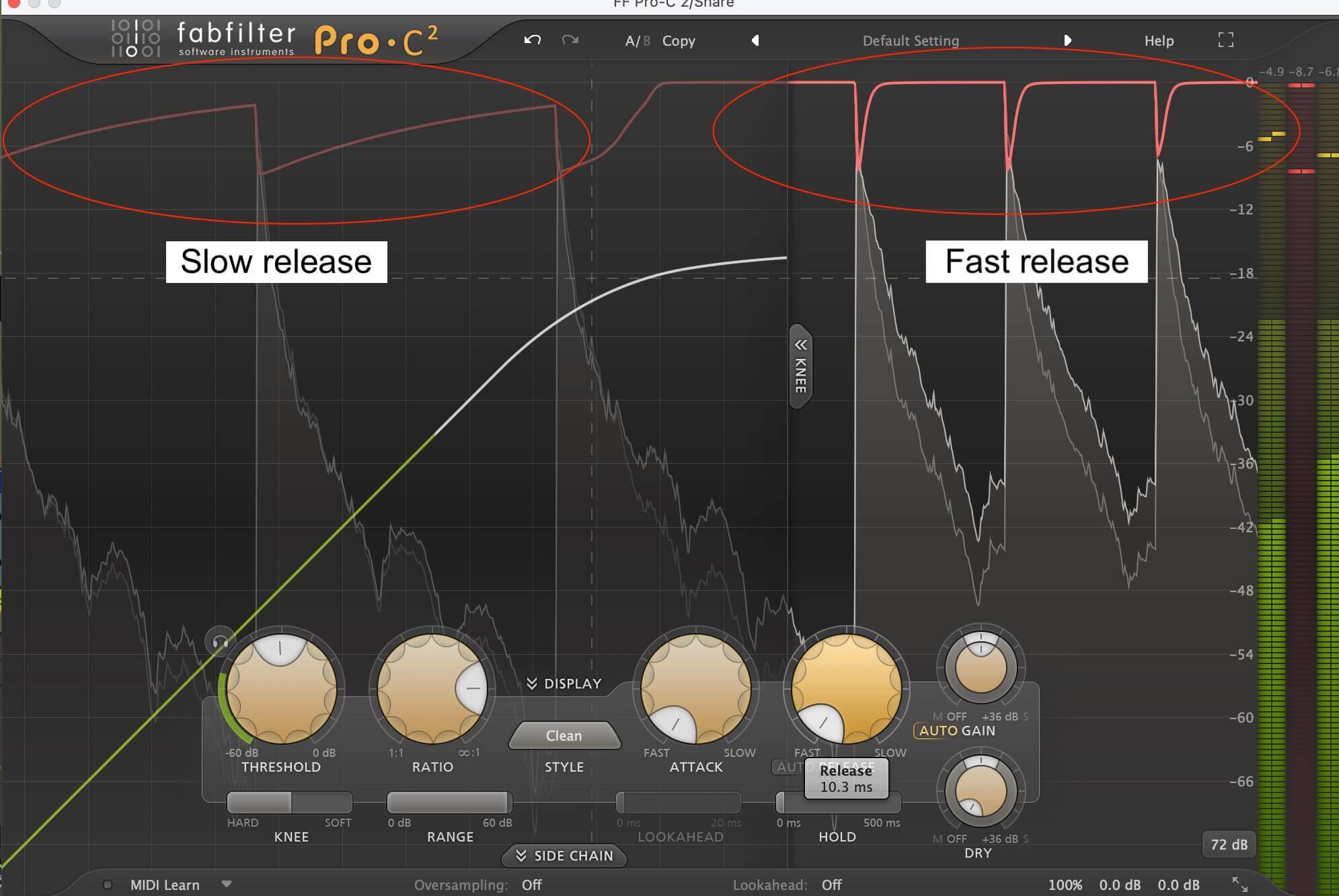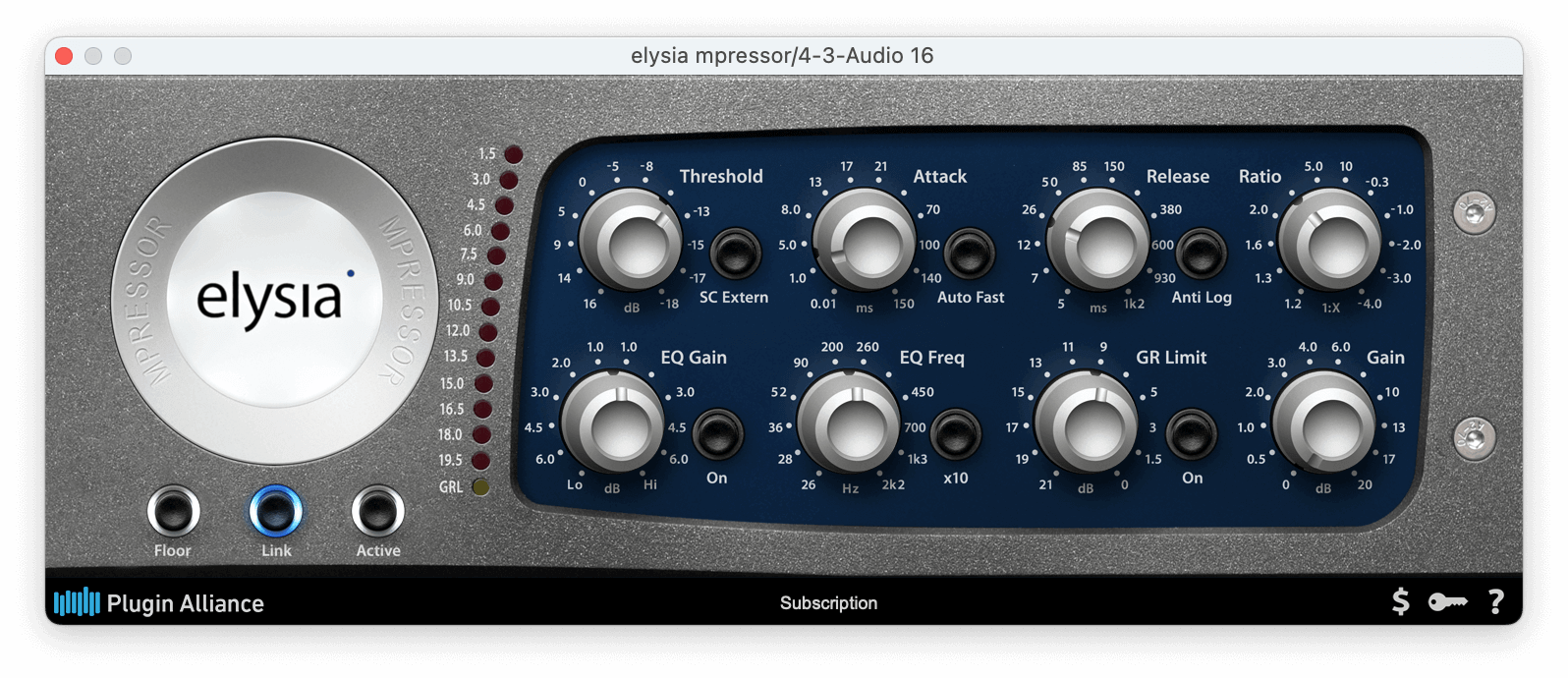Although a compressor’s release time might not seem as important as its threshold and ratio, it’s actually quite significant. It can have a considerable impact on the response of a compressor.
If your compressor has an auto-release, it’s tempting to use that, almost exclusively. Although that can often yield the most useful setting, it’s important to understand how the release time is impacting the compression process, so that you can set it for a specific type of response when needed. The same is true with attack time, the other so-called “Time Constant.”
In this excerpt from “How To Listen: Serial Compression Edition,” Fab demonstrates how an overly fast compressor release time can create distortion.
Hot Serial
The excerpt is from a video about serial compression, a technique that’s particularly useful on sources with loud peaks. The concept is to use two compressors: one set to squash down the high peaks and another to control the dynamics in the body of the track.
In the excerpt, Fab is processing an electric bass track that needs compression. He opens a UAD UA 1176N Rev E plugin as the first compressor, the one controlling the peaks. (If you watch the full video you’ll see Fab open a UAD Teletronix LA-2A as the second compressor).
Initially, he sets the Attack and Release knobs to their fastest speed, which is the fully counterclockwise, 5 o’clock position. Remember that the attack and release knobs on an 1176 are oriented backward compared to most compressors.

The setting on the UAD 1176 after Fab slows the release time down to get rid of the distortion.
Fab demonstrates that due to the short attack and release times, the compressor is cycling rapidly between attenuating and releasing. The (digital) circuitry is essentially getting overwhelmed and that’s causing some distortion. Fab then slows down the compressor release time and the bass sounds cleaner.
Grab and Go
For those unfamiliar, let’s quickly review how the attack and release controls affect the behavior of a compressor.
The attack time controls how quickly a compressor attenuates audio that exceeds its threshold. The release time governs how long it takes for the signal to return to its unattenuated state.
Fast attack times cause the compressor to clamp down on a sound almost immediately and therefore reduce its transient. If the compressor release time is long enough, it will continue attenuating the sustained portion of the sound. Fast attacks also cause more gain reduction because the transients, which are the loudest parts of a sound, get more heavily compressed.
Try this exercise. Put a compressor on a track with a lot of transient energy, like drums or percussion, bass or acoustic guitar. Watch the gain reduction meter as you turn the attack faster. You’ll see that you get more reduction with a fast attack time but the transients sound less sharp.
If the attack time is set to a slow setting, the transient will get through before the compressor clamps down. The basic rule of thumb for attack time is to set it relatively slow if you want the transients to sound punchy and natural. Set it fast if you want to lessen the transients’ impact or create a more obviously compressed sound.

Notice the difference in level of the transients in this comparison of a drum recording that’s uncompressed and then compressed with different attack times.
Release Please
The most common way to set the compressor release time if you’re going for transparent peak reduction is to make sure it’s fast enough that it lets go completely between transients. You don’t want it so fast that it’s releasing in the middle of notes or hits, however.
The easiest way to check the release behavior is to watch gain reduction meter. If the gain reduction is constant or close to it, you’ll get a smoother sound as the attenuation stays on for more than one transient, but at the cost of dynamic range. By speeding up the release, you’ll see the meter fall back to 0dB between notes, which lets the track “breathe” as you compress it.

You can see the difference between a slow and fast release with FabFilter Pro C-2’s level display.
Where you set the compressor release will depend on the tempo of the song and the rhythmic complexity of the source audio. It may not be possible to get the gain reduction meter to return to zero before the next hit or note, but you want some back and forth movement.
Dialing up Trash
When you’re compressing heavily, setting a fast attack and release can give you a more aggressive sound with a more prominent sustain portion. You can liven up a dull-sounding drum track with a fast attack and release. Because the sustain portion of the hits comes through more, you hear more of the room sound than you would if the release time was longer and the whole drum hit was attenuated.
In the following example, a snare is compressed by a FabFilter Pro C-2 compressor plugin. In the first two measures, the Release time is pretty slow and compresses each snare hit fully.
At measure 3, the Release is set faster, allowing more of the sustain portions of each hit to be accentuated. Starting at measure 5, the Release is at its fastest setting, compressing the transients mostly while allowing the sustain portions come through louder. (Note, the volume of the snare is automated down slightly at measure 3 and again at measure 5, because the faster release time results in less attenuation and therefore more volume.)

Here’s the setting for the snare with the fastest release in the example.
Here’s another example, this time on a rhythm guitar part. Again, you’ll hear it three times. In bars 1 and 2, there’s no compression. Bars 3 and 4 have a Plugin Alliance Elysia MPressor plugin providing about 6dB of gain reduction pretty steadily. In bars 5 and later, the Release time is faster. That makes the attenuation lower and the meter bounces in rhythm to the part, allowing the dynamics to come through better.

Here’s the setting for the Elysia MPressor for measures 5 and 6 of the second example.